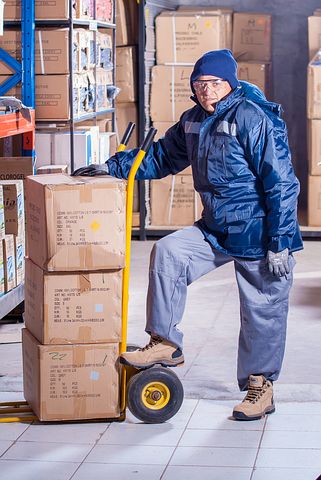
Safety is the number one concern for business owners and managers when it comes to their container unloading duties. No matter where they happen to be situated on the supply chain cycle, they have to ensure that their people are looked after without being compromised, avoiding those workplace accidents that cost brands dearly.
Even from a purely organisational perspective, safe actions in this setting helps to keep the enterprise on schedule and retain value in the eyes of stakeholders who want to know that the company is being responsible. This is a good opportunity to outline how these businesses follow a structured protocol and undertake the necessary steps for shipment.
Trained & Licensed Staff
The very first element that has to be covered for businesses with their container unloading duties is to have staff members trained and licensed before they enter these zones. This is critical because it provides the basis for their theoretical learning and to practice these maneuvers without having to be exposed to dangerous conditions that they are unaccustomed to.
Partnering With Authorised Courier Partners
The more experienced and resourced that courier partners happen to be, the easier it will be for operators to be on top of their container unloading duties. No business should be entering into agreements without these checks in place because the wellbeing of the people and the brand is at stake if shortcuts are taken in this regard.
Operating Through Safe Navigation Routes
Unloading these container compartments becomes an unpredictable practice when enterprises are having to acquire shipments from providers who travel from all manner of different routes. That is where dangerous roads can be engaged, seeing these pallet loads coming under greater pressure before the stock is damaged.
Working on Even Terrain
The one principle that has to be in play with container unloading exercises is being situated on an even footing, helping those staff members navigate safe terrain. If the terrain is uneven and there happens to be moisture on the surface, that can cause a catastrophe. Participants need to run these checks and select a space that is workable and even underfoot before the container is opened.
Transparent Container Contents
Among all of the logistical difficulties that can be found with container unloading duties, it is the actual contents of the shipment that has to be communicated to all parties. From electrical appliances to furniture, product components, agricultural stock of random boxes of items that are incorporated into the supply chain, staff members need to know what is involved and how much weight these shipments contain.
Personnel Removal From Unloading Position

Container unloading practices are best carried out when participants open the doors from the side, ensuring they are not standing in the direct path of the shipment when the area is opened. If the pallets are compromised during transport and happen to be resting against the doors, that will spell disaster for any individual who happens to be standing in that domain.
Machinery, Equipment & Attire Covered
Local organisations who are moving stock from point A to point B have to invest in these processes when they are a regular part of the business programming. This will include a functioning forklift, trolly jacks and the type of attire that protects the body and the face. If these measures are put into place, then members know that they can carry out their task effectively without making shortcuts.
Following safe container unloading activities requires work and commitment from businesses. If they put the right processes in place with participants they can trust, then it is just a matter of upholding those standards at every possible juncture.